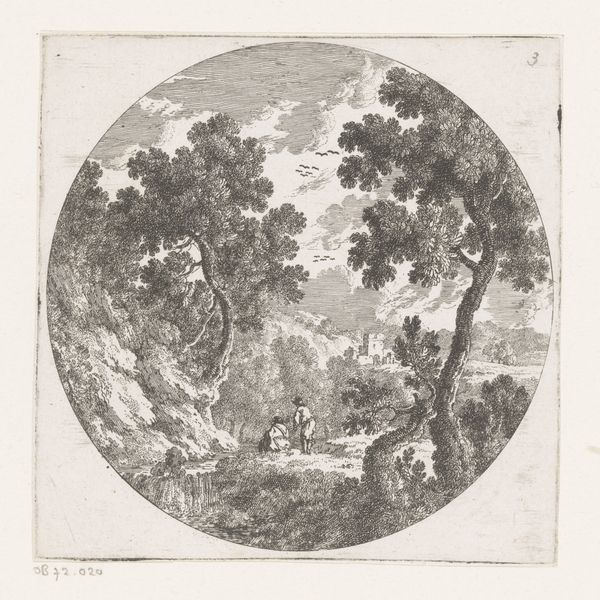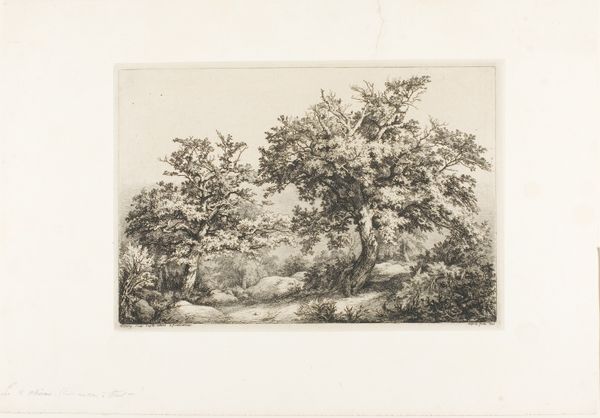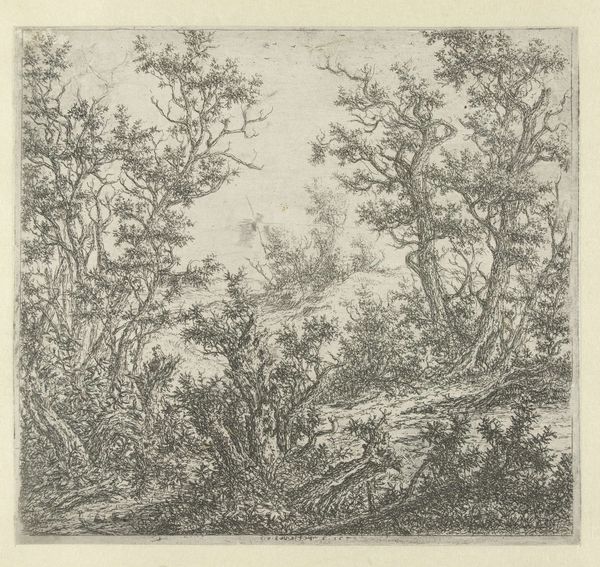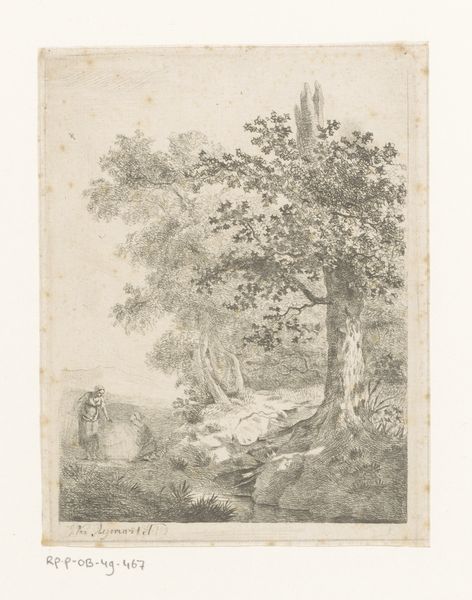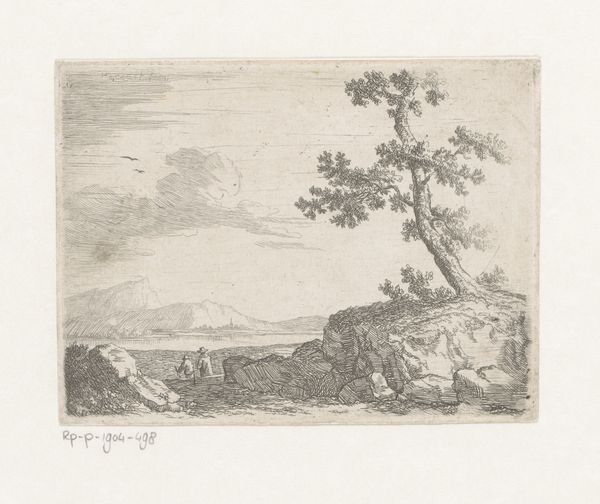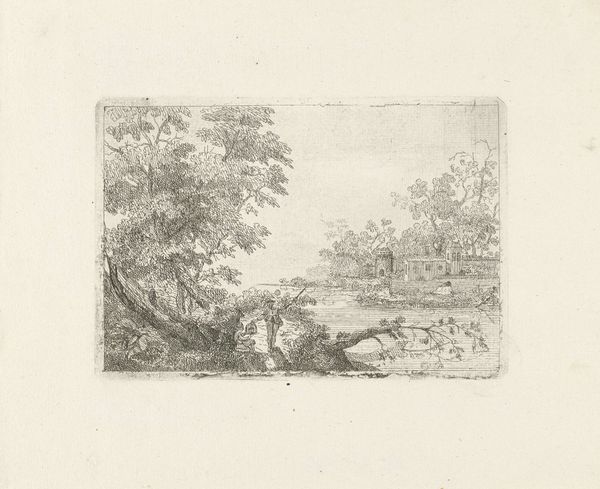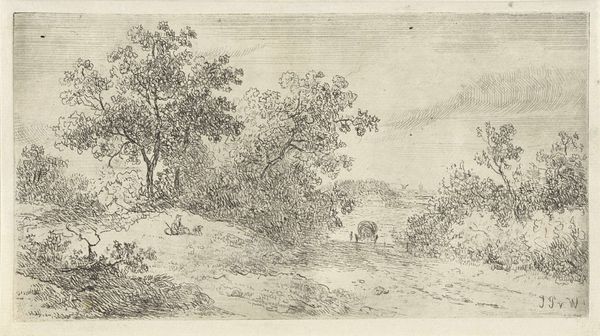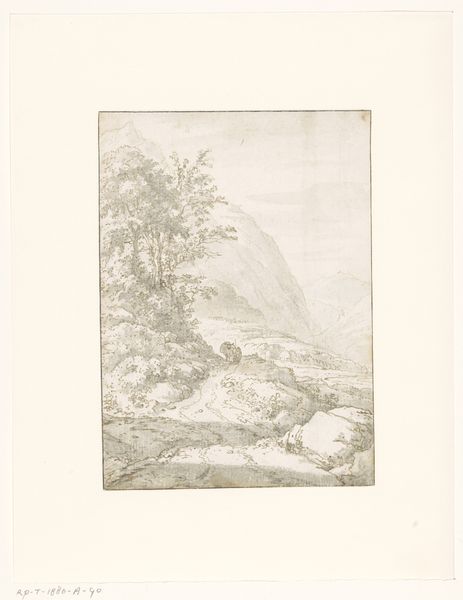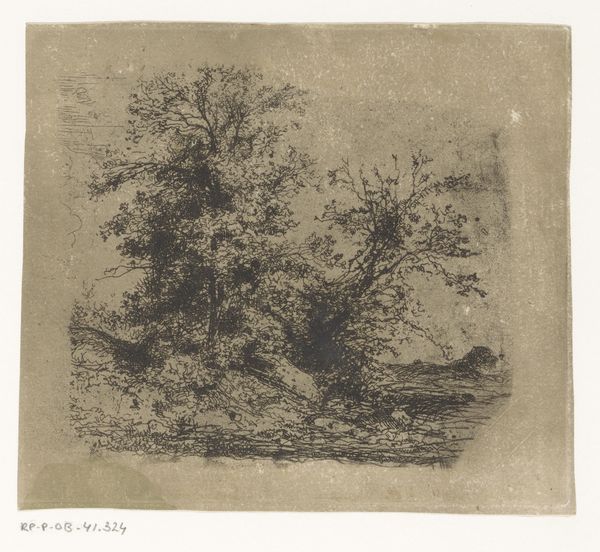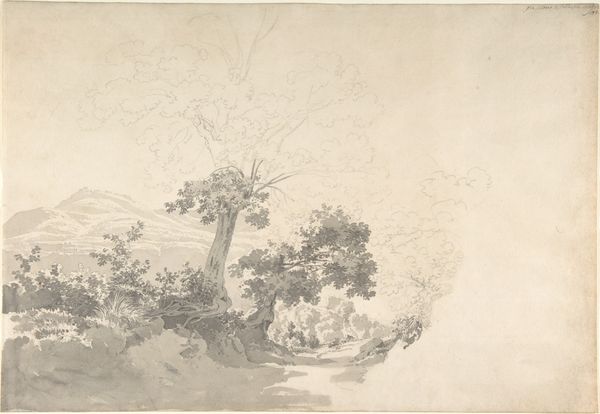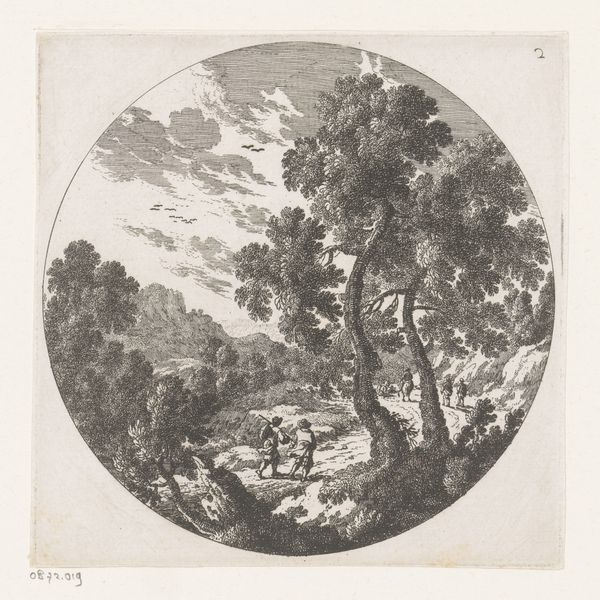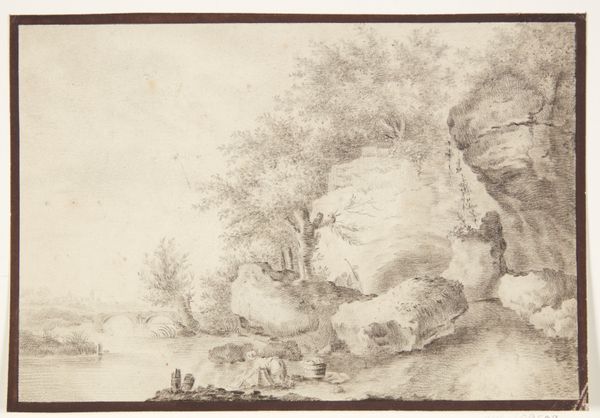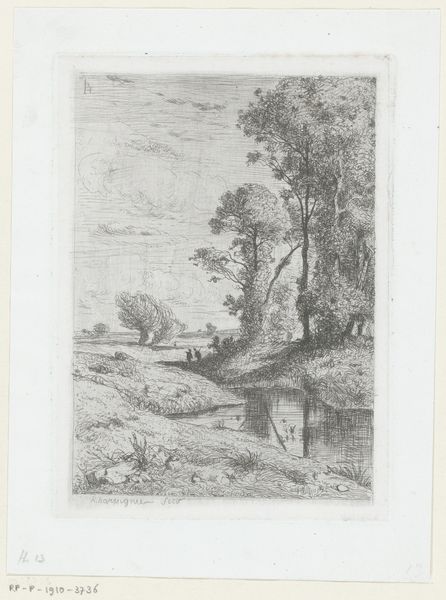
Dimensions: height 88 mm, width 104 mm
Copyright: Rijks Museum: Open Domain
Curator: Alexander Schaepkens created this etching around 1859, titled "Rotsblokken en struiken op de Sint Pietersberg" – “Rocks and bushes on St. Peter's Mount". Editor: It strikes me as quite muted, almost ghostly. The greyscale tones really evoke a sense of stillness and quiet observation of nature. The lines are intricate, especially in the foliage, creating texture... what is your immediate impression? Curator: The work reflects the Romantic era's deep engagement with nature, albeit through the lens of Realism which gained prominence then. It reminds us that, within Romanticism, we often see a turn towards accurate depictions of natural settings, contrasting idealized views. Here, it's not just about feeling the sublimity of nature, but representing it authentically as an experienced landscape. Editor: I find the composition so interesting. The massing of the rocks and bushes fills much of the picture plane, the relatively light expanse above directing your eye into it, the artist creating depth by shifting the focus in different parts of the composition. It invites close scrutiny and analysis; how do you read the interplay between what seems emphasized and what feels like background detail? Curator: Schaepkens seems intent on capturing not only the visible features of the landscape but also its tangible presence as a natural site experienced in a historical and societal context. Etchings, popular amongst printmakers, served a practical purpose; these prints could be widely circulated and brought imagery into homes as a means of cultivating the burgeoning appreciation for local landscapes. These accessible depictions supported local understanding and investment in regional identities. Editor: Yes, looking closely I am now getting that this is a very deliberate mediation, between detailed realism and something slightly…otherworldly? It makes you wonder what this place means, rather than simply what it looks like. And yet this tangible presence seems, ironically, a trick of mark making and tone. It’s subtle work, isn't it? Curator: Absolutely, the distribution and accessibility of such art fostered dialogues concerning our rapport with our environments and our identities associated with these natural settings. This piece at the Rijksmuseum contributes to a bigger discussion surrounding 19th-century print culture, romanticized nationalism, and realism’s pursuit to picture nature objectively, shaping cultural identity. Editor: I concur. By examining the contrasts within this seemingly simple landscape scene, from materiality to cultural function, we gain valuable insights into our ongoing relationship with the earth and ourselves. Thank you!
Comments
No comments
Be the first to comment and join the conversation on the ultimate creative platform.
